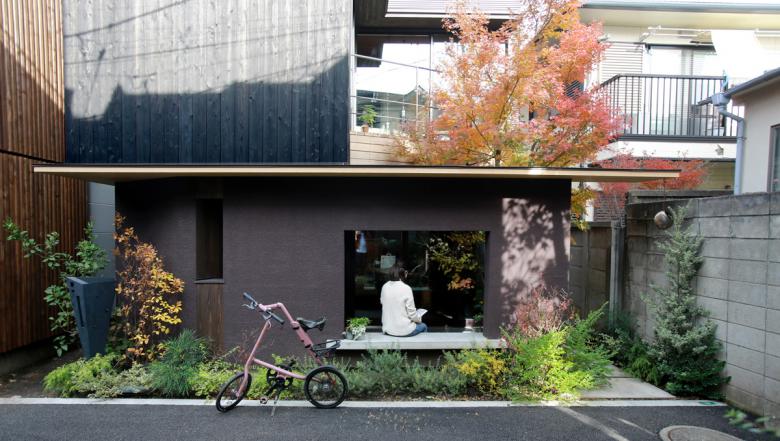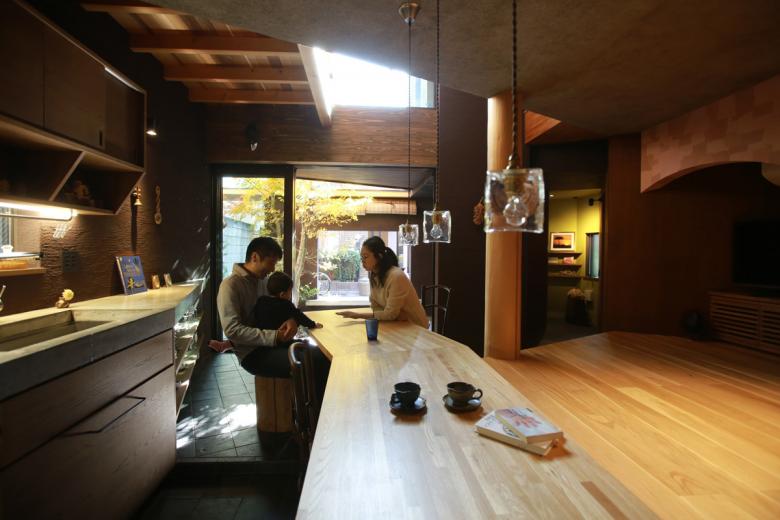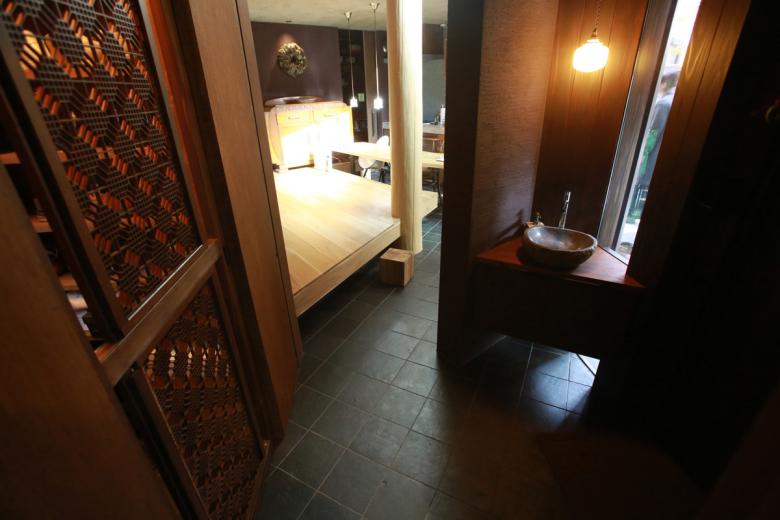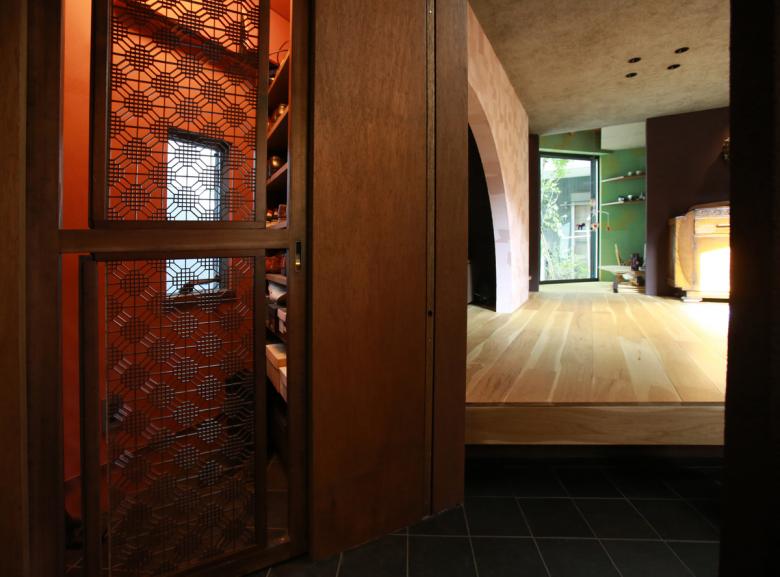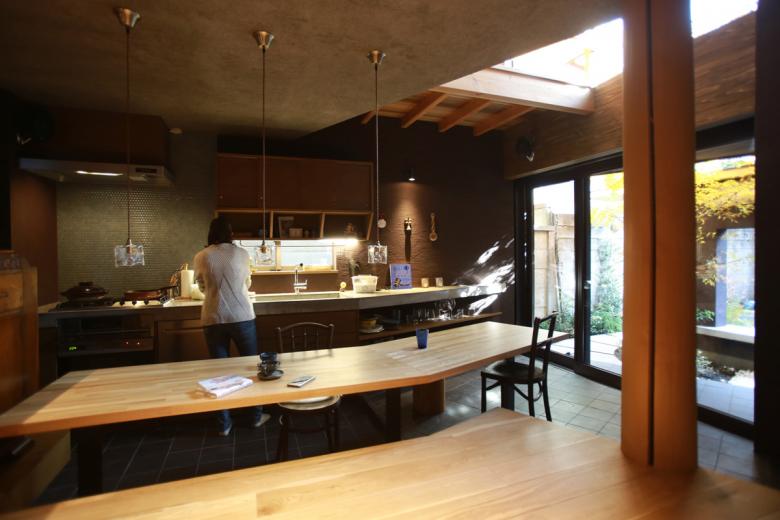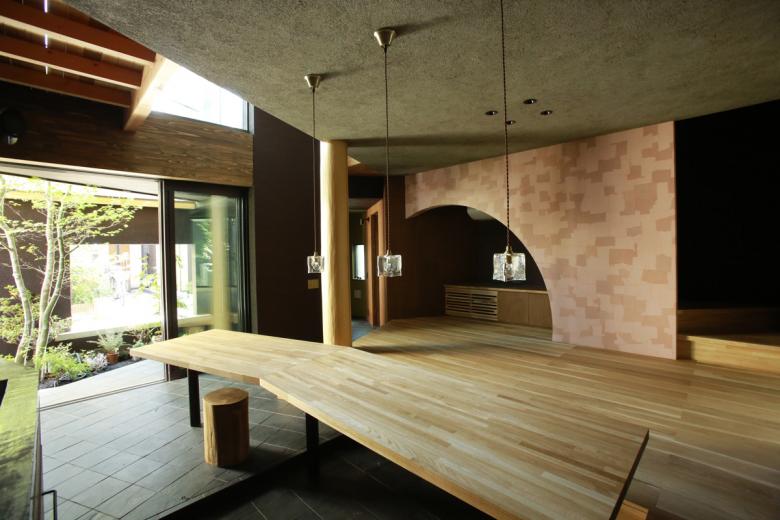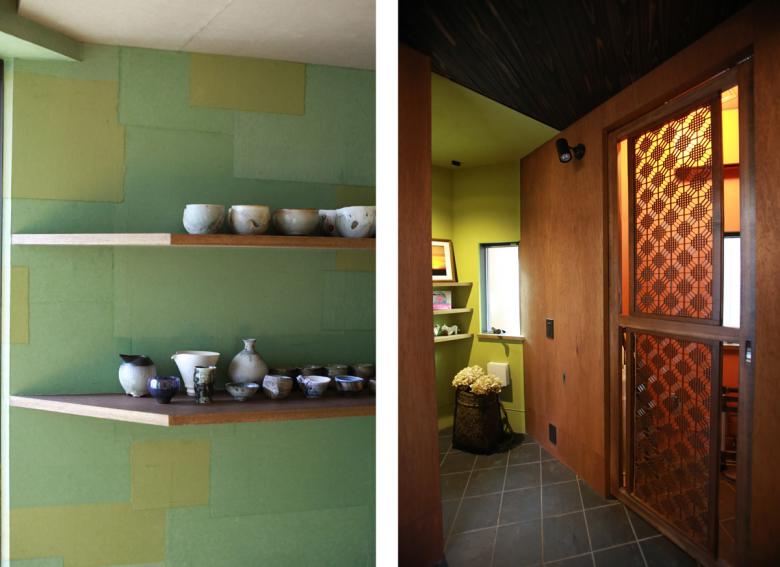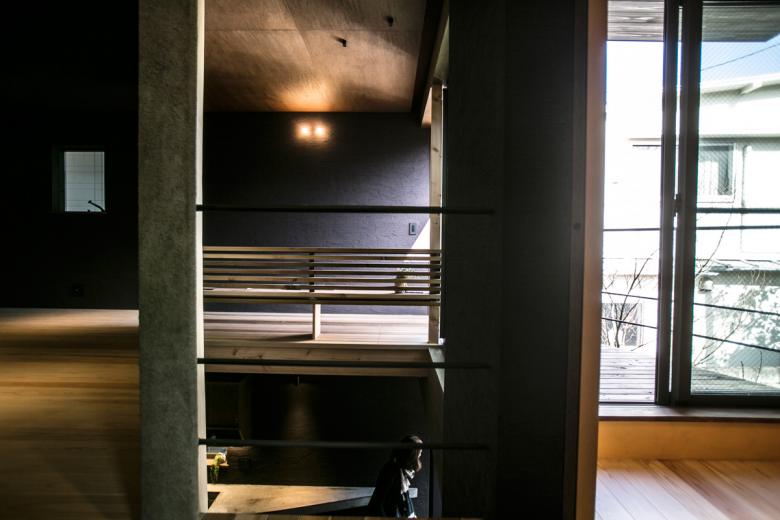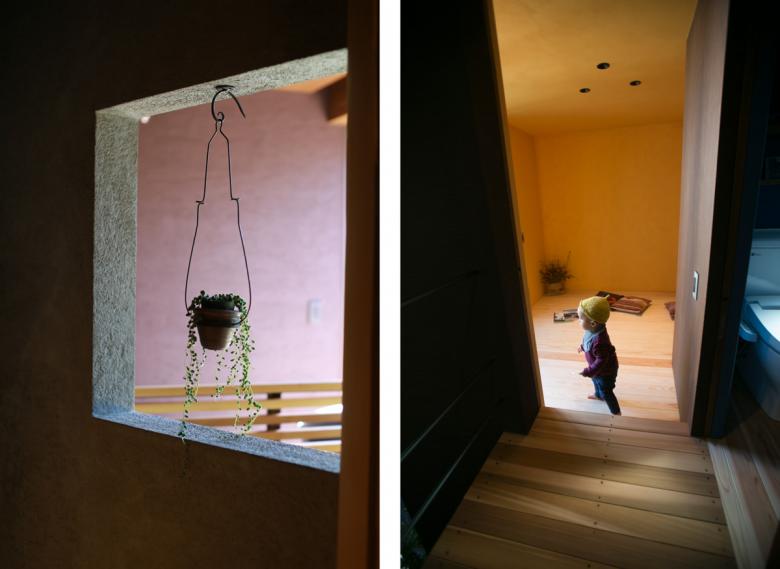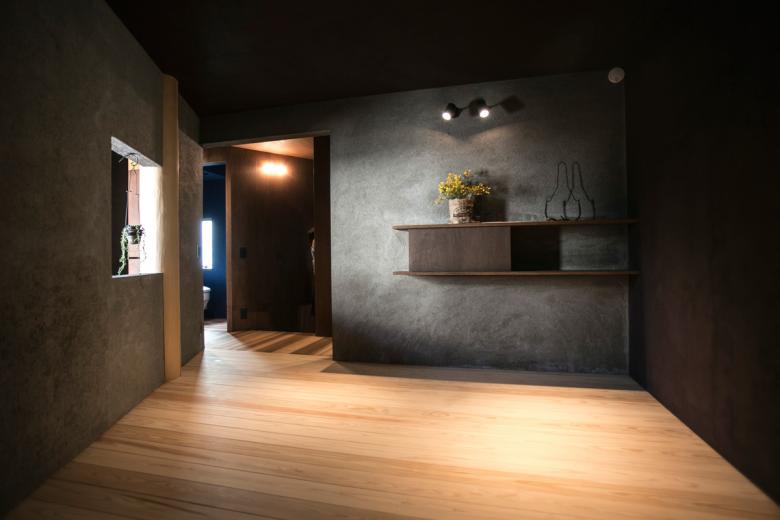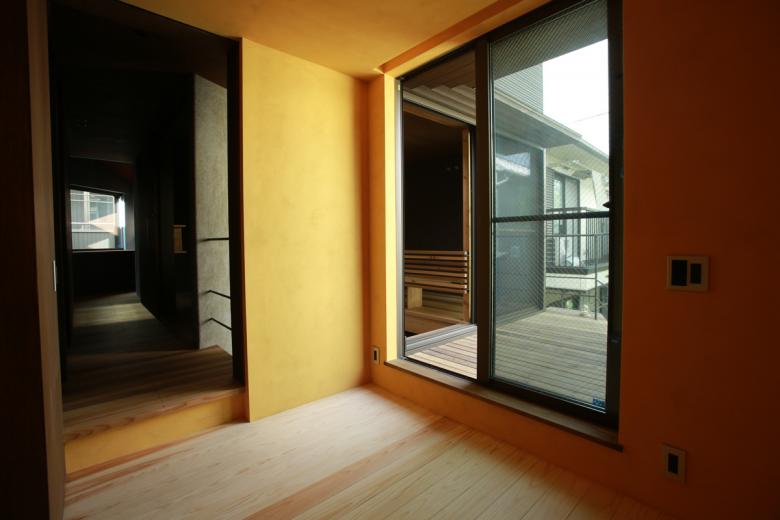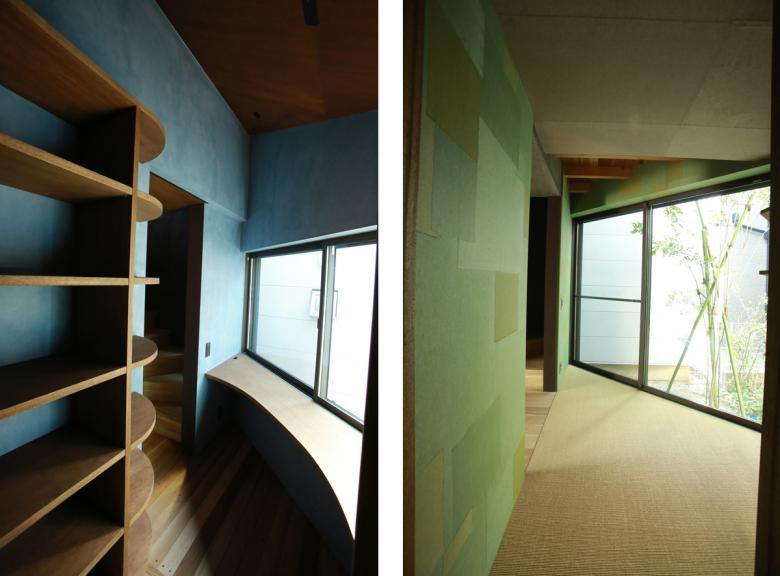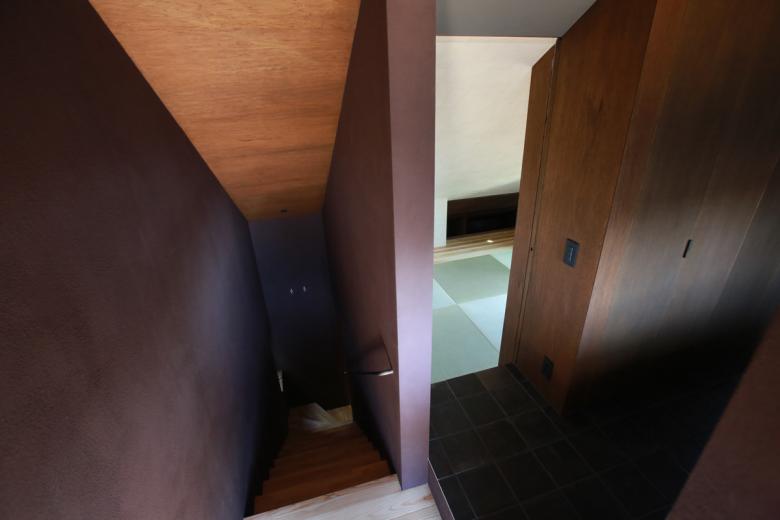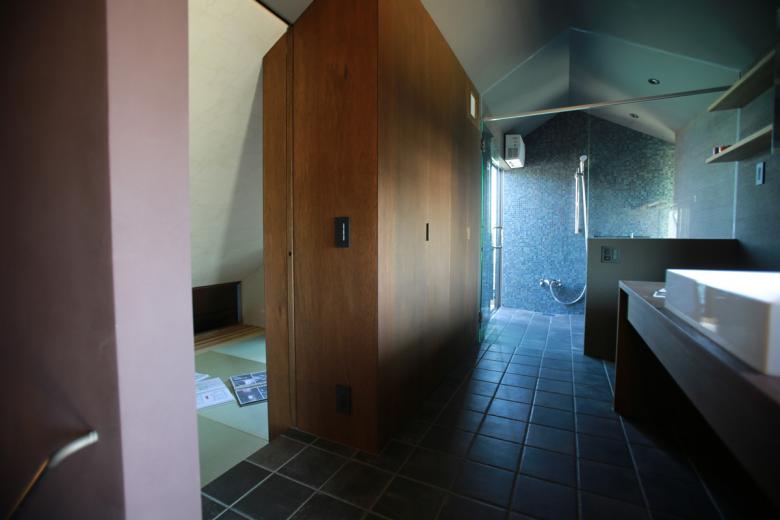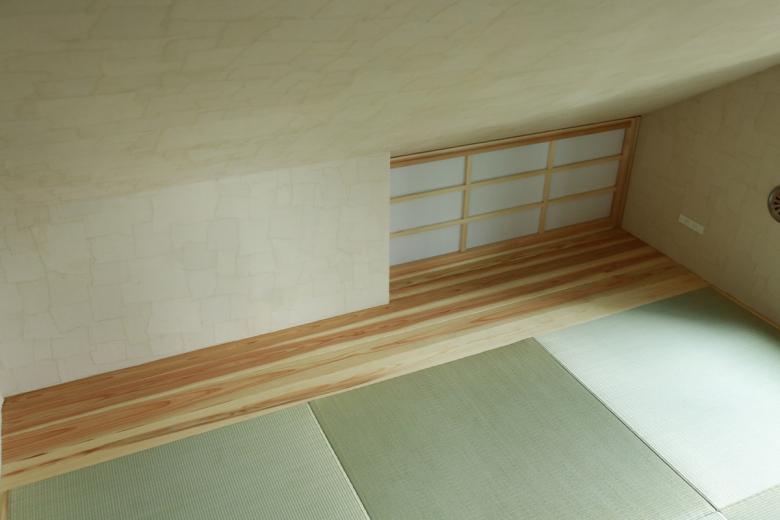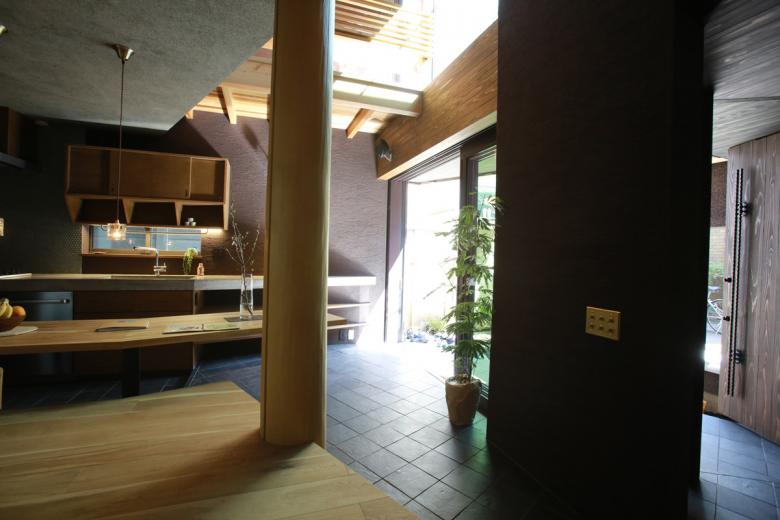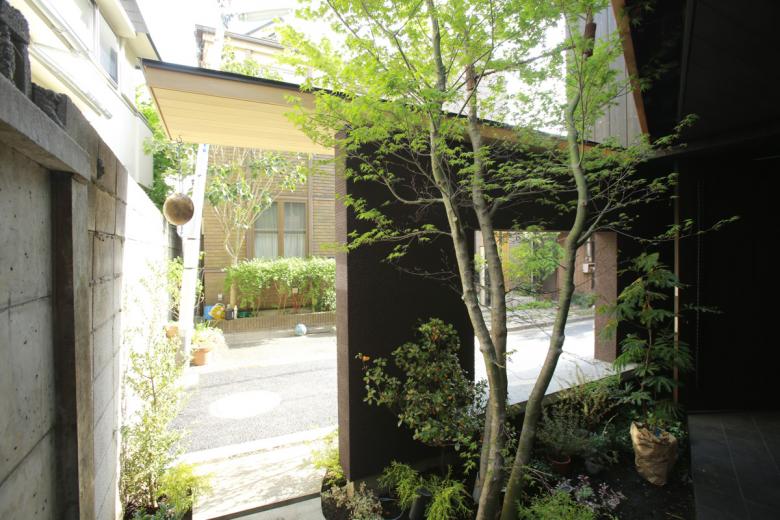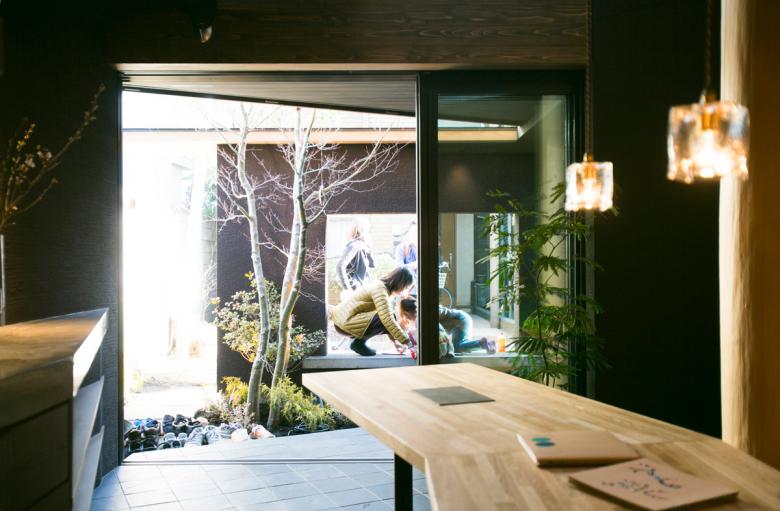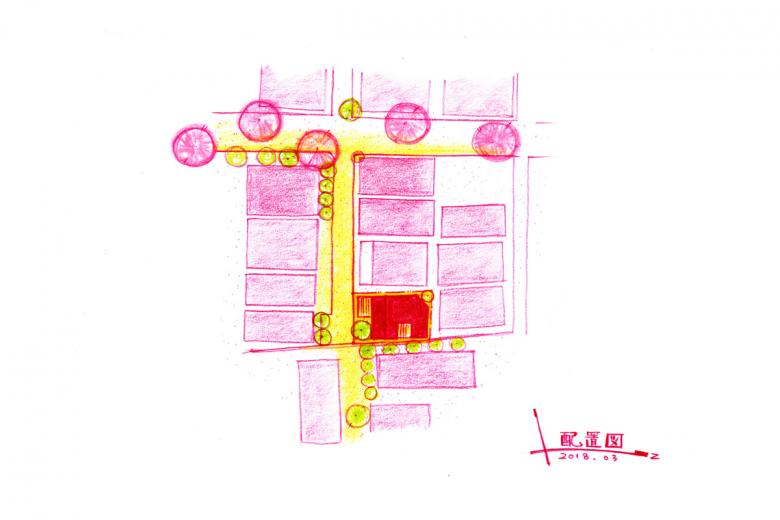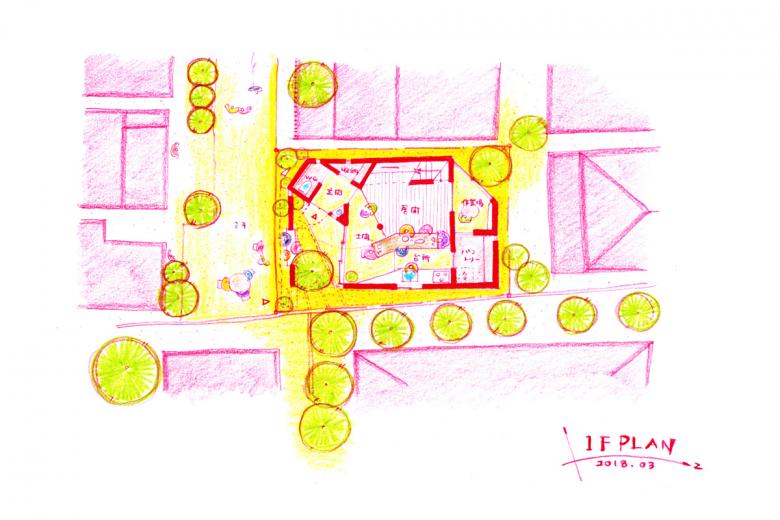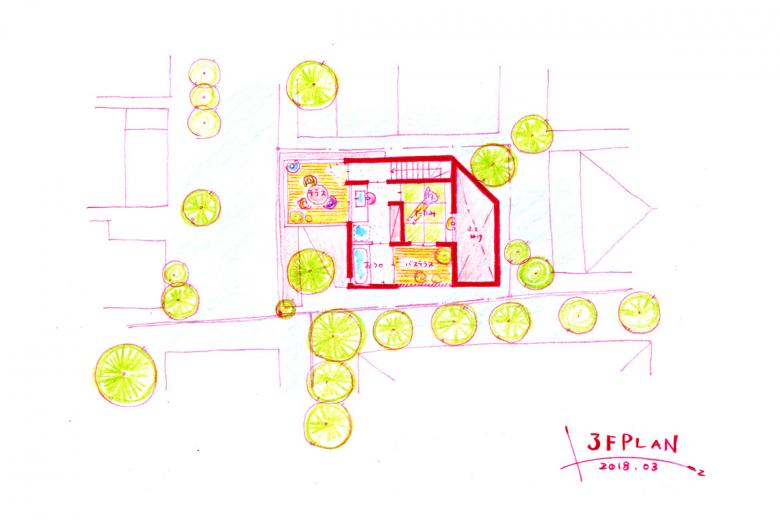Atarashi's house
Suginami-ku, Tokyo
- Architects
- Niko Design Studio
- Location
- Suginami-ku, Tokyo
- Year
- 2018
A house pretending to be a town.
Although the site is located in a densely populated residential area, the town has a peaceful atmosphere. For example, the surrounding streets are dotted with large cherry blossom trees, and there are many dead-end narrow alleys. Instead of being inaccessible to cars, the area is a safe place to raise children and to feel the human scale of the city. Considering the recent trend of many households in urban residential areas choosing a car-free lifestyle, I would rather call this area a "21st century residential area" in a roundabout way.
Shin-san's house is located at the end of a cul-de-sac in the city. The site is not large (69m2), but the road in front of the house is "at the end of the street", so there are no pedestrians except for a few neighboring households. The site is not large (69m2), but the front road is "at the end of the street" and there is no pedestrian traffic except for a few neighboring households.
However, if the house were to be left bare on the road, it would be obvious that the curtains would be left closed. Therefore, a low-height fence was built along the road boundary. The fence is not a "fence" in the sense of a "wall", but rather a "wall" in the sense of a "wall".
Rather than making the fence look like a fence, we decided to give it the appearance of an architectural structure. The roof is attached, and the finish is the same as the interior and exterior finishes. The only thing that reminds you that it is a fence is the fact that there are no fixtures in the openings. The wall finishes are based on this fence as the base of the entire house, and are spread out to each floor. The client requested many small rooms. The first and second floors are designed to have a circular flow so that the rooms can be connected to the depth of the living space,
The finishing of each room is finished in a different vivid color. The part facing the garden on the street side is a two-story atrium. The part facing the garden on the street side is a two-story atrium, which allows light into each room and makes the house feel as if it is in contact with the city.
Three elements, the stairwell, the garden, and the wall, all wrapped in the same material, are placed between the small living space and the town. I intended to create a layered experience of "close yet distant" and "connected yet protected". The road with cherry blossom trees could be considered a park pretending to be a road. A cul-de-sac could be a safe playground pretending to be a road. Although they are not planned, there is much to be learned from them. Especially in the case of a small house, it is more important to make a series of small touches than to make a big one.
At the same time, the effect of texture and materials is also significant due to the small size of the space.
A fence pretending to be architecture. A stairwell and materials pretending to be outside. Designing circulation lines and openings that pretend to be spacious," etc.
By layering various "pretenses, the intention was for the client to experience" a house that pretends to be a town" as an experience.
(The above was written for the June 2019 issue of Jutaku Kenchiku)
It's a small plane, but we have a pantry and a back flow line. It can be used for an open kitchen. In my small house, this is a plan with a WC beyond the entrance like this. I like this kind of plan. I don't have to worry about it.
The green and yellow patchwork washi and cherry blossom colored washi seen from the entrance dining room were made by Wataru Hatano. Climbing up to the second floor, you can walk around the atrium. Looking down the stairs from the third floor, you can see a small Japanese-style room with a low ceiling, like a hidden room. This room can only be accessed from the washroom, which is a mysterious flow line. Moreover, due to the diagonal restriction, the back of the room is only about 50 cm high. It is a very relaxing room. The washi in this room is also made by Hatano Wataru. We put it up together. By creating a small, weak "layer" of tidiness between the town and the living space, while protecting privacy,
「Our town!!!!」
We can create a life that feels like "my town " while protecting our privacy. Like a continuation of the city, wherever it goes.
Structure: Rezima Architects & Engineers Construction: Miyajima Corporation
Cooperation: Hatano Wataru (Japanese paper craftsman) / Taira Kaji (special hardware) / Takahashi En (planting) / Porter's Paint (special paint)
photo:Takehito Nishikubo
Related Projects
Magazine
-
上北沢のコートハウス
3 days ago
-
霰窓の家
1 week ago
-
蓮山居
2 weeks ago
-
宮前の家
3 weeks ago
-
Swiss Visions ─ 新世代の表現手法
4 weeks ago
